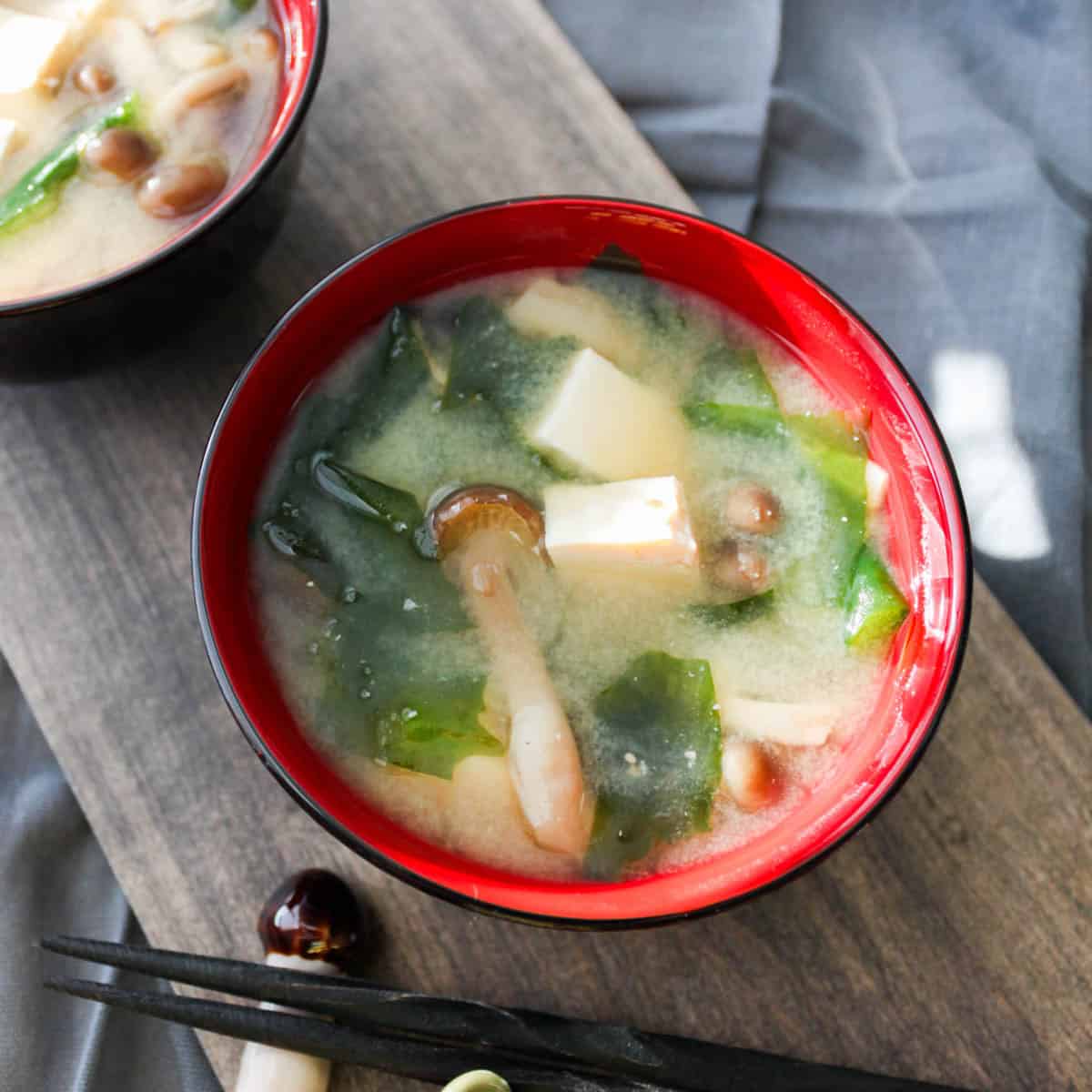Ingredients
Method
- Prepare the ingredients: Cut the stem of the shimeji and separate them into small clusters by hand. Cut the tofu into ½-inch pieces.2 ounces shimeji mushrooms, 3.5 ounces silken or firm tofu
- Cook the vegetables and dashi: In a small to medium pot, add the water, dashi powder, and the shimeji mushrooms. Cover and heat over medium. If you're using ingredients that take longer to cook, like root veggies or chicken, add them at this stage. Once it comes to a boil, let it cook for another 1-2 minutes or until everything is done. For me, this step took about 12 minutes in total.2 cups water, 2 teaspoons dashi powder
- Dissolve the miso: Turn off the heat, and slowly add miso, stirring with a ladle or fine-mesh strainer (see Note 4). Taste and adjust with more miso or dashi if needed.1.5 tablespoons miso
- Add tofu and wakame: Toss in the tofu cubes and wakame. Cover with a lid and let it sit for 3-5 minutes to soften.1 tablespoon dried cut wakame
- Serve: Once the wakame softens, pour the soup into bowls, top with minced green onions if you like, and enjoy!minced green onions
Notes
- (Note 1) Make dashi from scratch: If you'd like to make dashi from scratch, check out my post on how to make dashi from scratch (coming soon).
- (Note 2) Choosing dashi powder: Use natural dashi powder without chemicals or additives. My favorite is Kayanoya Dashi (check out the How to Use Kayanoya Dashi section for more details).
- (Note 3) Choosing miso: There are many types of miso, such as shiro (white), aka (red), and light-colored miso. Use whichever type you like, but avoid miso premixed with dashi—it doesn’t taste as good as using separate dashi and miso.
- (Note 4) Dissolving miso:Use a ladle or miso muddler to dissolve the miso into the soup, or use a fine-mesh strainer if you want to prevent the rice koji from floating in the soup.
- Start with Ingredients That Take Longer to Cook: Hard veggies like root vegetables or proteins like chicken need more time, so add them at the start to give them enough time to cook.
- Add-in Ideas: Feel free to switch up vegetables and/or proteins based on your preferences and the seasons, such as bok choy, broccoli, carrots, chicken, shrimp, different types of mushrooms, egg, and yuzu.
- To store: Once cooled, store leftovers in a pot or airtight container in the fridge for up to 2 days. Alternatively, transfer to an airtight container or freezer bag and freeze for up to 2 weeks.
- To reheat: To defrost frozen miso soup, move it to the fridge a few hours before reheating. Then, heat it in a pot over medium heat, avoiding boiling to preserve the flavors and aromas.
- 💡Tip: Some add-ins, such as potatoes and tofu, don’t freeze well, so remove them before freezing.
